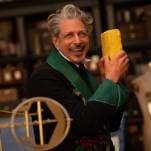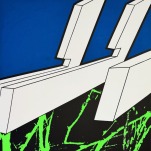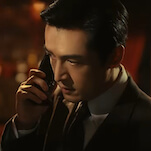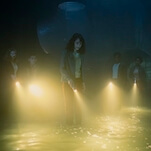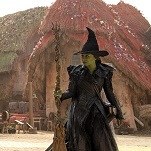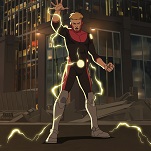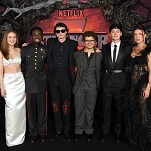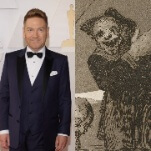British author Jasper Fforde scored a comic hit with his first published novel, 2001’s The Eyre Affair, which introduced the detective Thursday Next. After five novels set in Next’s literature-mad world, chasing Charles Dickens and Arthur Conan Doyle’s characters in and out of their venerable stories, Fforde is starting a new series in a different alternate history, or perhaps future. Shades Of Grey introduces an England several centuries after a mysterious Epiphany that reorganizes society based on its citizens’ ability to perceive portions of the visible-light spectrum. As if building a color caste system weren’t enough of a challenge, Fforde adds a series of Great Leap Backwards banning successive levels of technology, sacred writings based on the real-world Munsell Color System, laying out annoyingly complete and arbitrary Rules, and apocryphal people that no one will admit to seeing.
The first-person guide to the Colortocracy is Edward Russett, the socially ambitious son of a swatchman (a medical professional who uses color to treat illness) who is sent out to the Fringes to learn humility by doing a useless chair census. This puts a crimp in Edward’s plan to marry Constance Oxblood, heir to a prominent Red family’s string-production fortune. Also gumming up the works is Jane, a rebellious Grey (bottom-caste menial laborer) who not only captures Edward’s heart with her cute nose and shocking disregard for the Rules, but also participates in a resistance against everything Munsell stands for—harboring fugitives, questioning the accepted reality, and refusing to bow to the Yellows and Purples who run the show.
All this detail takes a few hundred pages to emerge; the novel’s length is in itself a joke, given that Edward recounts his story while being digested by a carnivorous tree. But Fforde is an author of immense imagination. Not satisfied with just a few layers of Dickensian jokes and revisions of the physical universe, he creates an archeological treasure trove for readers. There’s enough mystery to fill another five-book series: abandoned villages, fading natural color, the question of whether artificial “univisual” color piped in by a central utility system looks the same to everyone. Fforde winningly mingles enforced orderliness with a Brazil-esque bureaucracy that spawns the highly regarded art of “loopholery” in order to get anything done. The coming-of-age story and manic-pixie-dream-girl romance don’t need to be much more than icing on the cake to make Shades Of Grey a fancifully satisfying concoction.





